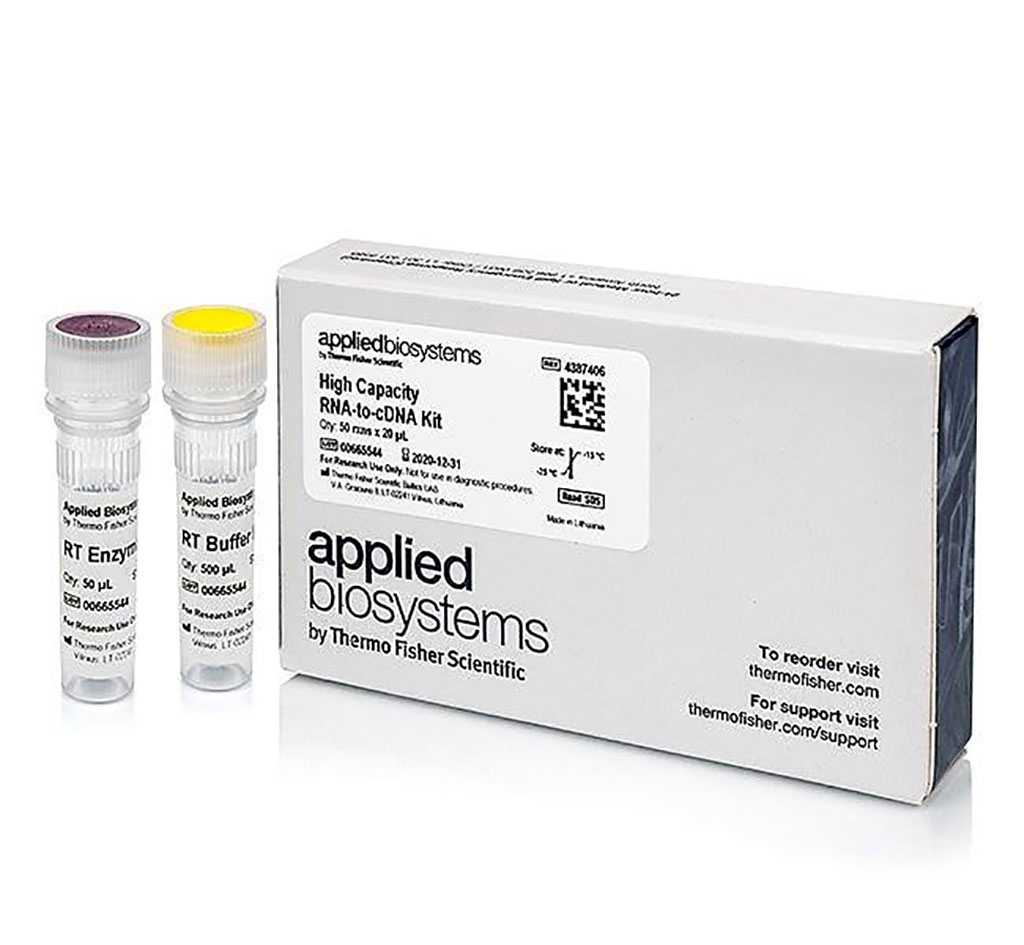Melanoma Test Offers Reassurance of Low Risk of Cancer Spread
By LabMedica International staff writers
Posted on 25 Jan 2022
Cutaneous melanoma is an aggressive form of skin cancer with an increasing worldwide incidence, particularly in the younger population. Although treatment for patients with metastatic melanoma has improved remarkably in the last decade, principally with targeted therapies and immune checkpoint modulators, there are still no consistently beneficial treatments for patients with metastatic disease.Posted on 25 Jan 2022
AMBRA1 is a scaffold protein with key roles in autophagy, cell survival and proliferation. AMBRA1 promotes autophagy through initiation of autophagosome formation, and mitophagy-mediated clearance of damaged mitochondria. Melanoma cells can influence the tumor microenvironment through secretion of growth factors, including transforming growth factors α and β (TGF-α, TGF-β).

Image: The High Capacity RNA-to-cDNA Kit is a streamlined reverse transcription kit designed for optimum performance with TaqMan Gene Expression Master Mix, Power SYBR Green PCR Master Mix, and other PCR enzymes (Photo courtesy of Thermo Fisher Scientific)
Clinical Scientists at Newcastle University (Newcastle, UK) and AMLo Biosciences Limited (Newcastle upon Tyne, UK) and their colleagues evaluated the potential contribution of melanoma paracrine transforming growth factor (TGF)-β signaling to the loss of AMBRA1 in the epidermis overlying the primary tumor and disruption of epidermal integrity. Immunohistochemistry was used to analyze AMBRA1 and TGF-β2 in a cohort of 109 AJCC all-stage melanomas, and TGF-β2 and claudin-1 in a cohort of 30 or 42 AJCC stage I melanomas, respectively, with known AMBRA1 and loricrin (AMLo) expression. Evidence of pre-ulceration was analyzed in a cohort of 42 melanomas, with TGF-β2 signaling evaluated in primary keratinocytes.
The investigators performed semiquantitative immunohistochemistry for or AMBRA1, TGF-β2, TGF-β3, claudin-1 or AMLo expression. Claudin-1 expression was quantified by H-score using Aperio ImageScope (Leica Biosystems, Nussloch Germany). Western blotting was generated and visualized using enhanced chemiluminescence (Bio-Rad, Watford, UK). Total RNA was isolated from cell pellets and reverse transcribed using an AMV Reverse Transcriptase kit (Promega, Madison, WI, USA) or High Capacity Reverse Transcription Kit (Thermo Fisher Scientific, Waltham MA, USA).
The scientists reported that increased tumoral TGF-β2 was significantly associated with loss of peritumoral AMBRA1, ulceration, AMLo high-risk status and metastasis. TGF-β2 treatment of keratinocytes resulted in downregulation of AMBRA1, loricrin and claudin-1, while knockdown of AMBRA1 was associated with decreased expression of claudin-1 and increased proliferation of keratinocytes. Importantly, they showed loss of AMBRA1 in the peritumoral epidermis was associated with decreased claudin-1 expression, parakeratosis and cleft formation in the dermoepidermal junction.
Penny E. Lovat, PhD, Professor of Cellular Dermatology and senior author of the study, said, “Like mortar and bricks holding together a wall, AMBRA1, Loricrin and Claudin 1 are all proteins key to maintaining the integrity of the upper layer of the skin. When these proteins are lost gaps develop, like the mortar crumbling away in the wall. This allows the tumor to spread and ultimately ulcerate which we know is a process associated with higher risk tumors. Our new understanding of this biological mechanism underpins the test we have available.”
The authors concluded that their data suggested a paracrine mechanism whereby melanoma secretion of TGF-β2 causes peritumoral loss of AMBRA1 and reduced epidermal integrity facilitating erosion of the epidermis and tumor ulceration. Targeting TGF-β2 signaling may therefore represent a novel adjuvant treatment strategy for high-risk early-stage tumors with loss of epidermal AMBRA1. The study was published on January 13, 2022 in the British Journal of Dermatology.
Related Links:
Newcastle University
AMLo Biosciences Limited
Leica Biosystems
Bio-Rad
Promega
Thermo Fisher Scientific













